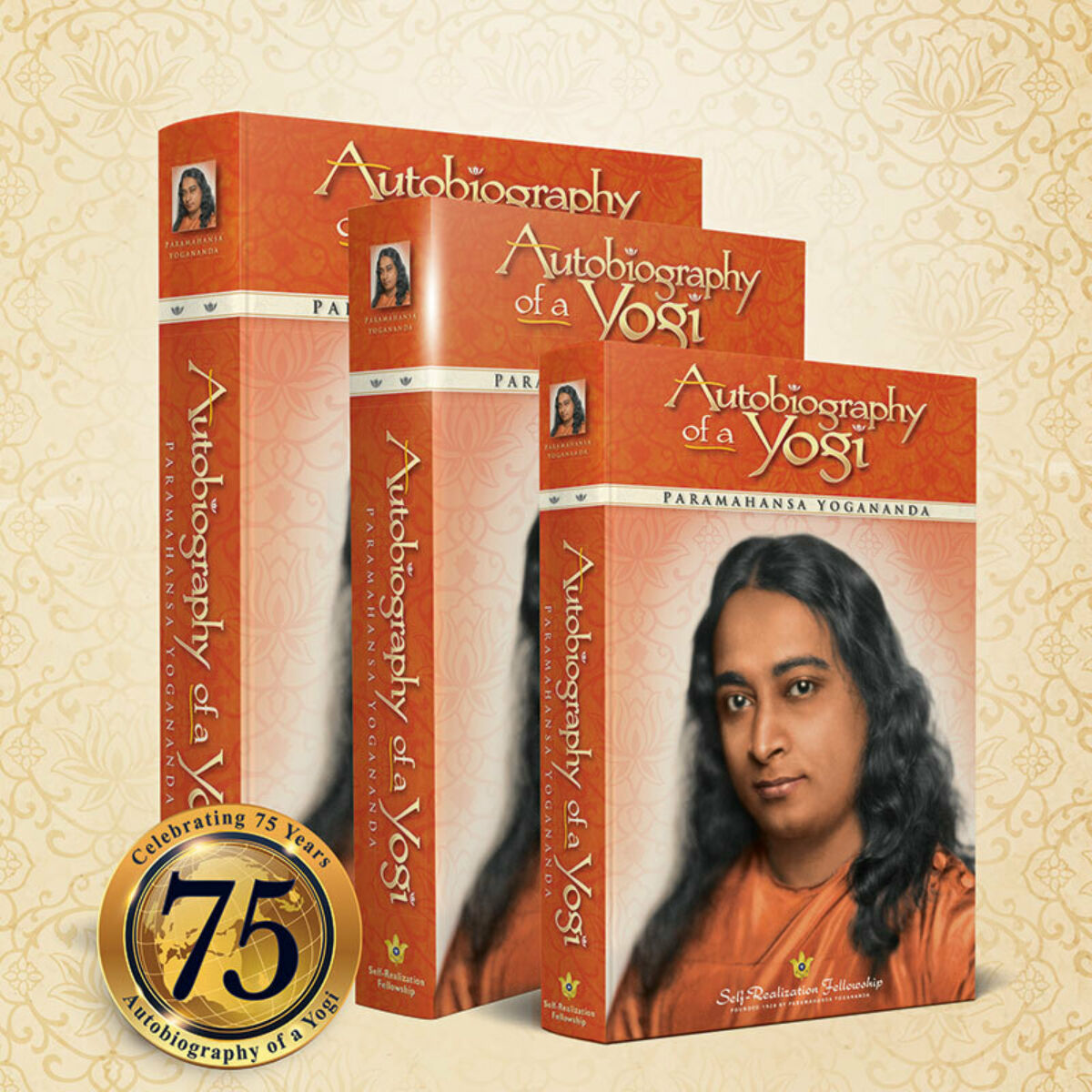In the towering legacy of spiritual literature, Autobiography of a Yogi (1946) by Paramahansa Yogananda is one of the most admired and well-respected memoirs in the genre. The book follows the spiritual journey of Yogananda, from the formative mystical experiences of his early years in India to the discovery and cultivation of the philosophies that brought him legions of followers all over the world. More than a series of inspired life lessons and the details of a sacred belief system, Autobiography of a Yogi is an epic life story told with the insight, humor, and wisdom that embody traditional Indian storytelling. The book has been translated into more than thirty languages and has never been out of print, illustrating the importance and global scope of Yogananda’s teachings.
Born Mukunda Lal Ghosh, Yogananda opens his memoir with a detailed description of his family and childhood. He explains the importance of the disciple-guru relationship both in his culture and in his home. Because spiritual wisdom is clearly a major aim of his family and the society they inhabit, from his earliest memories, Yogananda has supernatural experiences and abilities. For instance, he sees a past life as a yogi in the Himalayas. He is also an enlightened infant—essentially, the soul of an adult, self-conscious man trapped in the body of a baby— and grows frustrated with not being able to walk and talk. This fact produces frequent crying spells in the newborn Yogananda.
His strict father has an executive position with the Bengal-Nagpur Railway. His loving mother, whom Yogananda declares “a queen of hearts” who taught “only through love,” devotes her life to raising her eight children. Both his mother and father have a deep and abiding connection with their guru, Lahiri Mahasaya.
As Yogananda grows up, his mystical encounters continue. Aware of his advanced spiritual capabilities, he seeks out saints and sages in his community, desperate to find someone to guide him on his own spiritual path.
At the age of eleven, he has a vision in which his mother comes to him and tells him she will die. Not long after, she does, and Yogananda feels an inexorable pull to make a pilgrimage into the Himalayas. Ultimately, his brother convinces him not to go, but Yogananda continues to look for the guru that can better steer his sacred course.
When he is seventeen, Yogananda finds that guru. His name is Swami Sri Yukteswar Giri; Yogananda has several visions and premonitions of him before the two ever meet. Then, when Yogananda sees Sri Yukteswar in a Benares market, he knows instantly who he is. Within minutes of meeting, the two men vow unconditional spiritual love to one another.
Sri Yukteswar guides Yogananda with a firm hand. Though the young disciple acknowledges his teacher’s coldness, he embraces the lessons he learns and the strength of the connection they share. Yogananda says that the disciple-guru relationship goes beyond the confines of this one life; it lasts multiple lifetimes, and he and Sri Yukteswar have been student and teacher in past incarnations.
Sri Yukteswar introduces Yogananda more deeply to the principles of Kriya yoga, the ancient yoga system that Yogananda would eventually translate into contemporary terms to bring to the world. He devotes himself to the study of this practice, living in the ashram with his guru, meditating, and learning the ancient yogic ways.
At the same time, Yogananda has his other foot in the logical, practical world. He attends Serampore College, but throughout his schooling, he is not a good student as he only wants to focus his energies on meditation and the cultivation of the spiritual life. Sri Yukteswar reminds him of the lessons, perspectives, and opportunities for enlightenment that only come from living and being in the material world. In 1915, shortly after receiving the equivalent of today’s Bachelor of Arts degree, Yogananda takes formal monastic vows into Sri Yukteswar’s order and officially becomes known as Swami Yogananda Giri.
Now, Yogananda begins to distribute the spiritual wisdom he has learned with the larger world. In 1917, he opens a boys’ school in West Bengal, where the curriculum combines contemporary educational approaches with yoga practice and spiritual development. In 1920, Yogananda goes to the United States for the first time to share his teachings on yoga and Indian spirituality, and the nation embraces his message. That same year, he founds the Self-Realization Fellowship in Los Angeles to further circulate his teachings.
For the rest of his life, Yogananda lives in America, except for a brief period in the 1930s when he returns to India to visit his guru. During this visit, Yogananda meets Mahatma Gandhi and introduces him to Kriya yoga. Also during this visit, Sri Yukteswar confers upon Yogananda the title of Paramahansa, meaning “supreme swan”—the highest level of spiritual enlightenment one can achieve.
The epic journey of Yogananda’s life and the universality of his teachings bring him into contact with many revered spiritual personalities and celebrities of his day. He meets the German Catholic mystic Therese Neumann, the physicist Sir C. V. Raman, the poet Rabindranath Tagore, and the agricultural scientist Luther Burbank, whom Yogananda calls “an American saint” and to whom he dedicates Autobiography of a Yogi.
utobiography of a Yogi is the recounting of one exceptional man’s life and a manifesto of the beliefs and lessons he espouses. Though the roots of his spiritual philosophies are in Hinduism, Yogananda sees the interconnectedness of all religious principles and traditions. He often infuses his teachings with those of Jesus Christ and those found in the Bhagavad Gita. The whole aim of his life’s work is to awaken people to their innately divine nature. “The human mind,” Yogananda says, “is a spark of the almighty consciousness of God.”
